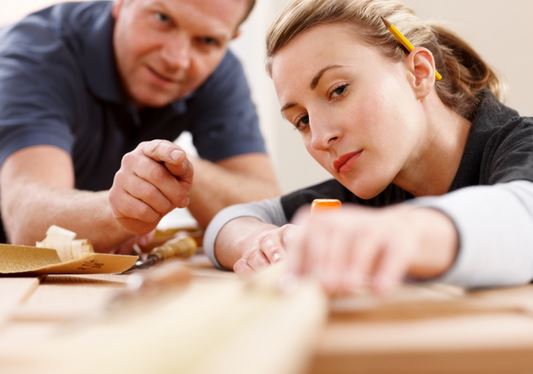4 Home Fix-It Projects You Can Tackle On Your Own

Regular wear and unexpected damage can make the home less attractive, but no with the passage of time, it is inevitable. Homeowners will want to make sure damage is repaired regularly. Some of these repairs need to be handled by skilled professionals. Others can be done with just the right tools and knowledge. With the popularity of DIY projects these days, you can save tons of money by fixing up your home on your own. Homeowners can tackle four home fix-it projects without professional help.
Replacing broken overhead kitchen cabinets will make a difference in the home. The first step is to find the studs where the old cabinets were mounted. The stud locations should be marked on the new cabinets. Holes should be drilled in the cabinets where the screws will go. For a job like this, many contractors use Porter Cable Parts and accessories like a hole saw attachment for a drill. The cabinets can then be raised and screwed into place securely. Temporarily attaching a wooden guide to the wall below the cabinets will help to keep everything level.

Damaged hardwood floors can make a home unattractive. Start by using a pry bar to lift the damaged boards out. Tongue-and-groove boards must have the tongues cut at the joints. The underlying floor should be cleaned of any adhesive or debris. A new board can be cut to size quickly and safely using a SawStop Contractor Saw. The new board is then fitted into the opening. The board can be secured with nails or adhesive. Gaps are filled with thin wooden pieces that are sanded flat to complete the repair. And then, voila! Your DIY hardwood floor is complete.
New windows can increase the curb appeal and efficiency of a home. Old windowpanes are removed from the frame. The trim, casing and track are then pried out of the wall. The opening should be cleaned. The new window is fitted into the space. Shims might be necessary to level the window and create a tight fit. The new window is then installed using silicon and the hardware from the manufacturer.
A tankless water heater can replace a broken or inefficient heater. These heaters provide hot water fast. Installing a tankless water heater involves running a ventilation line into the basement that ends where the unit will sit. The heater is mounted and attached to the vent. New pipes must be run from the main water supply to the unit. The final step is to connect the gas or electric power. While this is a simple DIY project fro some people, not everyone is experienced enough to deal with power or water lines, which can be dangerous. If you don’t hire a professional, at the very least, seek out the advice of someone who is familiar with these lines and how to work with them.
It is important to have all of the tools and supplies ready before tackling a home fix-it project, and things will go much faster if you have a tool and supply checklist for each project. That way, you won’t have to stop mid-way through a project just because you don’t have the right tools to finish it. Make sure you do your research before starting a project to be sure you have the correct materials, but also so that you can be confident in the work you are doing. This is the best way to make sure you are being safe, and have a great finished product.
